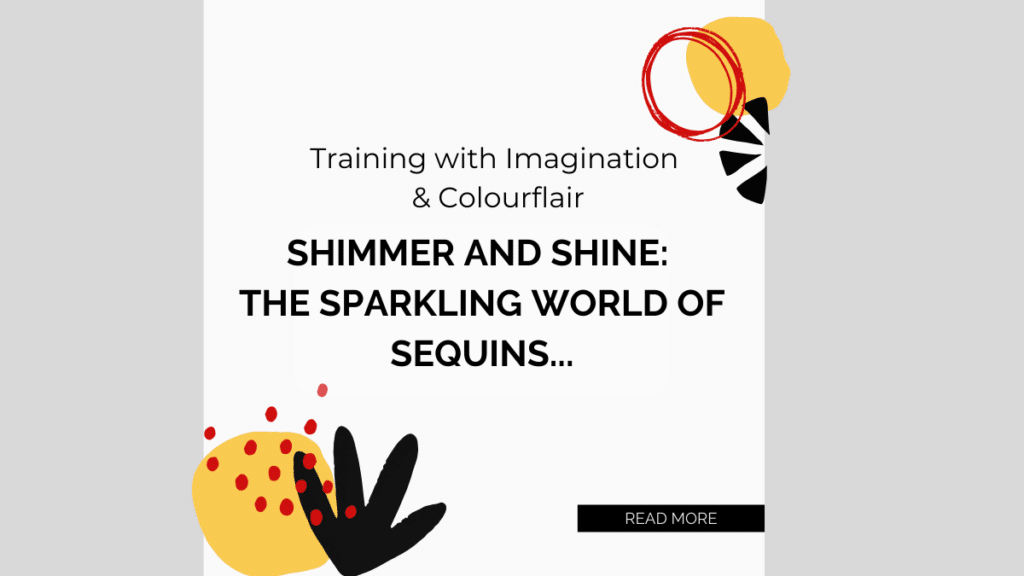Sequins are the ultimate go-to for adding a little sparkle and drama to any outfit. From glitzy gowns on the red carpet to the perfect New Year’s party dress, these tiny, shiny discs have been catching the light—and our attention—for centuries. But where did sequins come from, how are they made, and what’s the deal with their environmental impact? Let’s take a closer look.
The Sparkly History behind Sequins
They’ve actually been around for thousands of years, and they started out as anything but plastic. Back in ancient Egypt, people decorated their clothes with real gold discs to show off their wealth. Tutankhamun’s tomb even had outfits covered in golden sequins, which were thought to bring prosperity in the afterlife.
Fast forward to the Renaissance, and coins and metal sequins were all the rage among Europe’s elite. The word “sequin” actually comes from the Arabic sikka, meaning coin. By the 20th century, new materials like plastic made sequins lighter, cheaper, and more accessible—perfect for the glitz and glamour of Hollywood and beyond.
How Are Sequins Made Today?
Most modern sequins are made from polyester or PVC (a type of plastic). Here’s a quick breakdown of how they come to life:
- Creating the Base: Plastic is dyed, melted down, and flattened into super-thin sheets.
- Shaping the Sequins: Machines punch out tiny discs (or stars, hearts, and other fun shapes).
- Adding the Shine: The sequins get polished, coated, or treated to add metallic, iridescent, or holographic effects.
- Finishing Touches: A small hole is punched so they can be stitched or glued onto fabric.
From glossy finishes to matte or even “flip” sequins that change colour when brushed, there’s a sequin style for every vibe.
All the Colours of the Rainbow
They come in every colour imaginable, from classic gold and silver to bold neon shades. Special effects like holographic sparkles, pearlescent sheens, or colour-changing finishes make them even more eye-catching. No wonder sequins are everywhere—from clothes and accessories to home décor.
Choosing Sequin Colours for Your Seasonal Palette
If you’ve had your colours analysed, sequins can be a stunning way to amplify your natural palette. When selecting sequin shades, stick to the tones that harmonize with your season. For Springs, go for warm, light, and clear hues like champagne gold, coral pink, or aqua blue. Summers shine in soft, cool, and muted sequins—think silvery grey, dusty rose, or lavender. Autumns dazzle in warm, rich, and earthy tones such as bronze, copper, or olive green. For Winters, icy metallics like platinum, royal blue, or deep jewel tones like emerald or ruby red make the perfect statement. Matching your sequins to your season ensures your sparkle complements your natural colouring, making your overall look cohesive and radiant.
The Downside: Environmental Impact of Sequins
As much as we love sequins, their environmental impact isn’t so glamorous. Most sequins are made of plastic, which means they contribute to the global plastic pollution problem. Worse, tiny microplastics from sequins can break off during wear or washing, ending up in oceans and harming marine life.
And because they are often attached to fast fashion pieces, they don’t get worn for long before being thrown away. Recycling clothes with sequins is tricky too—those little bits make it hard to process the fabric.
Can Sequins Be Sustainable?
Thankfully, some brands are working on eco-friendly alternatives. Biodegradable sequins made from materials like cellulose (a plant-based fibre) are starting to pop up, and recycled plastic sequins are another option.
You can also make a difference by:
- Shopping vintage or second-hand sequined pieces.
- Choosing sustainably made sequins when you can.
- Taking good care of your sparkly clothes so they last longer.
Wrapping It Up
Sequins bring the fun, the flair, and the sparkle we all love, but they also come with some environmental baggage. By being mindful about how we shop, care for, and dispose of our sequined treasures, we can enjoy the shine without the guilt.
How do you rock sequins—head-to-toe glam or just a touch of sparkle?
If you’d like to find out how to train in Colour Analysis from the comfort of your own home, completed the form at the bottom of this page.
You might also find the following pages helpful:
Diploma Course in Colour Analysis
Follow up on Pinterest: https://uk.pinterest.com/trainingwithimagination/colour-analysis-l-training/
Like us on FB: https://www.facebook.com/trainingwithimagination

